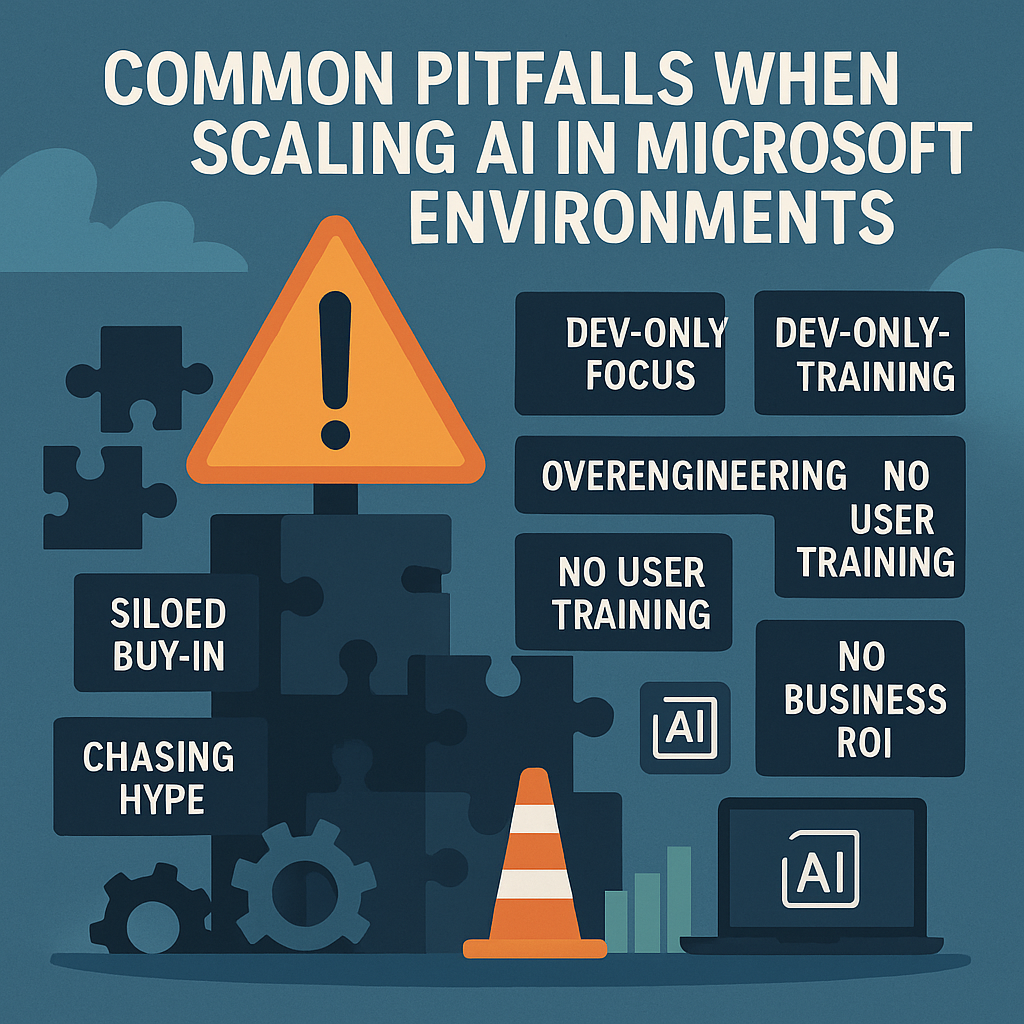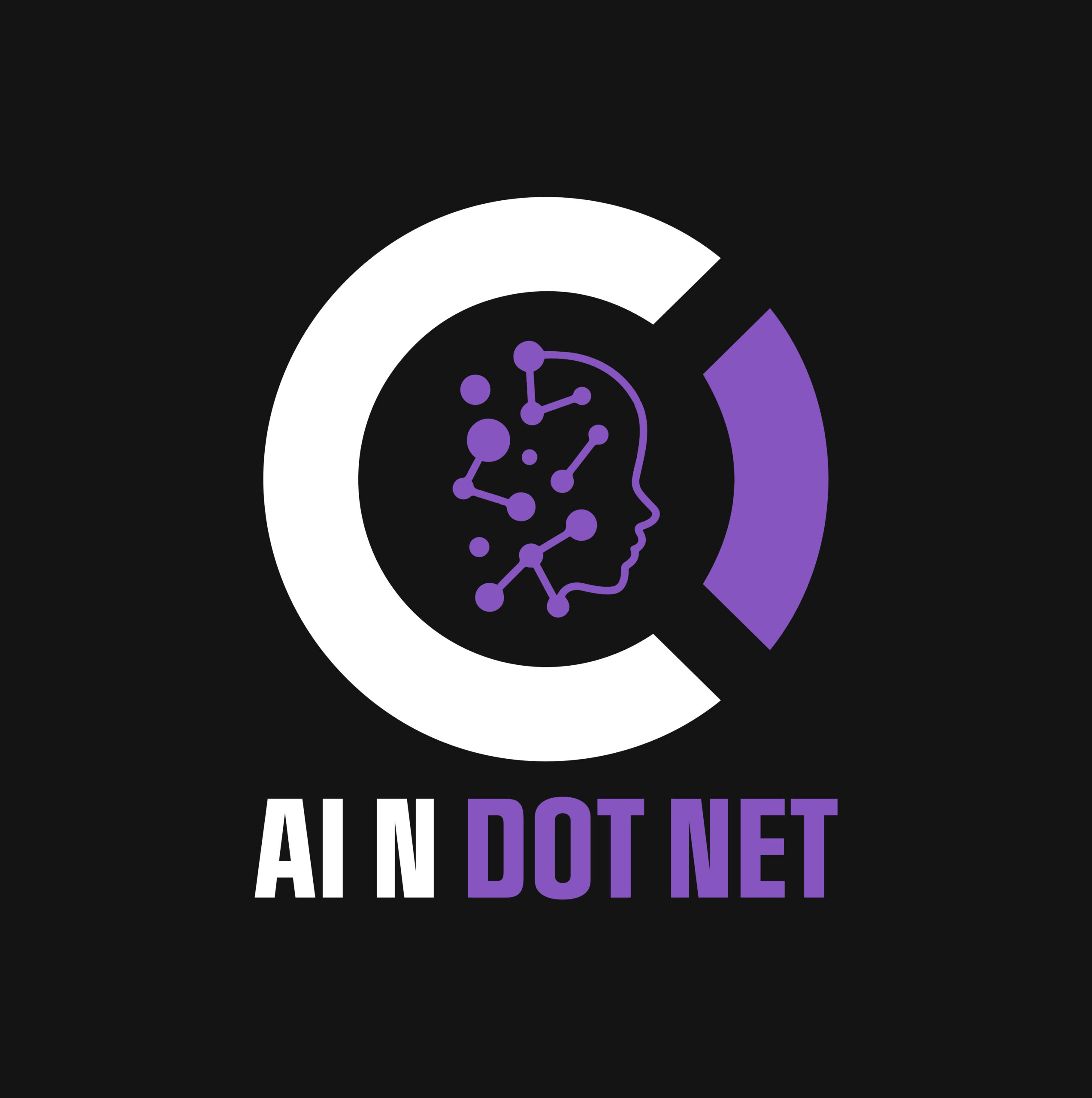Why so many promising AI pilots stall in enterprise Microsoft ecosystems—and what to do about it.

AI pilots are easy. Scaling them across a Microsoft-based enterprise? That’s where things fall apart.
Despite having access to powerful tools like ML.NET, Azure AI, Power Platform, and Semantic Kernel, many organizations run into repeatable, costly failures when trying to expand AI from proof-of-concept to production.
This article unpacks the 7 most common pitfalls that derail AI scaling efforts within Microsoft-centric environments—and how to sidestep them.
⚠️ Pitfall #1: Ignoring Role-Based Buy-In
Microsoft shops often run on functional silos: executives, PMs, devs, infrastructure teams, security, etc. If your AI deployment only has one group’s support, it’s doomed to stall at scale.
What to Do:
- Build role-aware roadmaps that show what AI means to each team
- Use Microsoft Teams, SharePoint, and Power BI to deliver tailored updates
- Include execs, security, and DevOps from day one—not just developers
⚠️ Pitfall #2: Starting with the Coolest Tool, Not the Biggest Pain
It’s tempting to dive into GPT integrations, Copilot extensibility, or real-time forecasting models. But the real driver of scale is solving business pain—not chasing cool tech.
What to Do:
- Use Power BI or Excel-based surveys to identify pain points company-wide
- Map AI use cases to cost, speed, or accuracy improvements
- Start with Microsoft-native tools your team already knows: Power Automate, Forms, Outlook, etc.
⚠️ Pitfall #3: Failing to Operationalize the AI Lifecycle
Many AI projects live in dev branches, notebooks, or GitHub repos. But enterprise AI lives or dies on repeatability: logging, versioning, error handling, deployment, and feedback.
What to Do:
- Implement ML pipelines using Azure ML or GitHub Actions
- Use Application Insights and Azure Monitor to track system health
- Embrace model versioning and telemetry early—before the first failure
⚠️ Pitfall #4: Treating Governance as an Afterthought
Scaling without governance invites legal risk, audit failures, and data chaos. Especially in regulated industries, skipping over explainability, compliance, or approval workflows will sink the project later.
What to Do:
- Use Azure Purview or Microsoft Compliance Center for data lineage and privacy
- Integrate AI model documentation and change logs into DevOps workflows
- Adopt Microsoft’s Responsible AI Standard as a baseline
⚠️ Pitfall #5: Overengineering the First Deployment
Your AI pilot worked great—but now the team is rewriting it with 6 new libraries, 3 frameworks, and zero reuse. This is how velocity dies.
What to Do:
- Reuse code via NuGet packages, Semantic Kernel plugins, or Power Platform components
- Favor low-code automation where appropriate (e.g., Power Automate + AI Builder)
- Standardize deployments with ARM templates or Bicep across environments
⚠️ Pitfall #6: Not Training Users (or Training the Wrong Ones)
AI adoption isn’t just a technical rollout—it’s a human behavior change. Most teams overlook training or aim it only at devs.
What to Do:
- Create role-specific training using Microsoft Learn, Viva Learning, or internal LMS
- Use short Copilot demos for execs and hands-on labs for developers
- Make AI part of the daily workflow, not just a sidebar project
⚠️ Pitfall #7: Failing to Measure Impact in Business Terms

Technical success does not equal business value. If you can’t show how AI improved profit, efficiency, or risk posture, execs will pull the plug—or never scale it.
What to Do:
- Build an AI ROI dashboard using Power BI
- Align success metrics to department OKRs
- Share quick wins monthly via Teams updates or SharePoint posts
✅ Summary Table: Pitfalls & Fixes
| Pitfall | Solution |
|---|---|
| Siloed buy-in | Tailored communication & onboarding |
| Chasing hype | Start with high-pain use cases |
| Dev-only focus | Operationalize lifecycle with monitoring & feedback |
| No governance | Leverage Microsoft’s compliance ecosystem |
| Overengineering | Standardize and reuse components |
| No user training | Provide role-specific training paths |
| No business ROI | Track impact in terms executives care about |
🧭 Final Thought
If your AI pilot succeeded but your rollout stalled, you’re not alone. Microsoft environments offer incredible tools—but scaling AI requires orchestration, not just execution.
Use this list of pitfalls to audit your current AI projects and course-correct where needed. And most importantly: remember that people, process, and platform must scale together—or not at all.
Want to stay ahead in applied AI?
📑 Access Free AI Resources:
- Download our free AI whitepapers to explore cutting-edge AI applications in business.
- Check out our free AI infographics for quick, digestible AI insights.
- Explore our books on AI and .NET to dive deeper into AI-driven development.
- Stay informed by signing up for our free weekly newsletter

